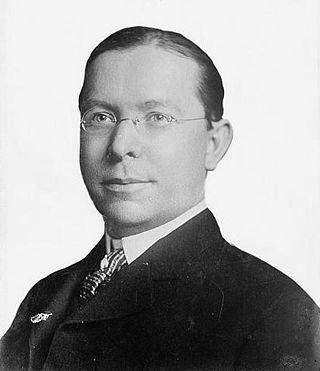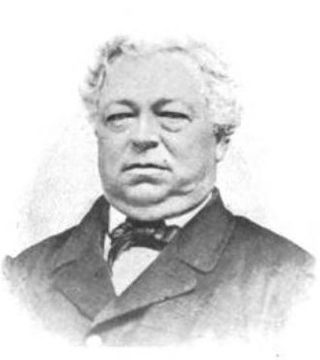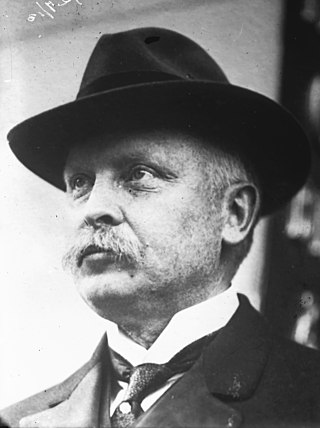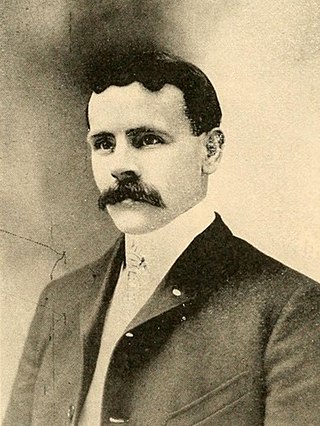
Colonel Joseph F. Scott (1860 - December 7, 1918) was the New York Superintendent of State Prisons until 1913. He was president of the National Prison Association. [1]

Colonel Joseph F. Scott (1860 - December 7, 1918) was the New York Superintendent of State Prisons until 1913. He was president of the National Prison Association. [1]
He was born in 1860 in Craftsbury, Vermont. He attended the State Normal School in Johnstown, Vermont. He served as the superintendent of the Elmira Reformatory starting in 1900 when he replaced Frank W. Robertson. The same year he was elected as the president of the National Prison Association. [1]
He was appointed the New York Superintendent of State Prisons until he was forced out of office by governor William Sulzer in 1913 on charges of non feasance and neglect of duty. [2] [3] He was replaced by John B. Riley.
He died on December 7, 1918 in Denver, Colorado. [1]

The American Correctional Association is a private, non-profit, non-governmental trade association and accrediting body for the corrections industry, the oldest and largest such association in the world. The organization was founded in 1870 and has a significant place in the history of prison reform in the U.S.

John Alden Dix was an American businessman and politician who served as 38th Governor of New York from January 1911 to January 1913.

Martin Henry Glynn was an American politician. He was the 40th Governor of New York from 1913 to 1914, the first Irish American Roman Catholic head of government of what was then the most populated state of the United States. A Democrat, he signed a number of important reforms, including the direct primary and labor laws.

William Sulzer was an American lawyer and politician, nicknamed Plain Bill Sulzer. He was the 39th Governor of New York and a long-serving congressman from the same state.

Frank Swett Black was an American newspaper editor, lawyer and politician. A Republican, he was a member of the United States House of Representatives from 1895 to 1897, and the 32nd Governor of New York from 1897 to 1898.

Denver Sylvester Dickerson was an American politician. He was the 11th governor of Nevada from 1908 to 1911. A member of the Silver – Democratic coalition party, he had previously held office as the 13th lieutenant governor of Nevada from 1907 to 1908. During his governorship, Dickerson worked to reform the state prison system.
Auburn Correctional Facility is a state prison on State Street in Auburn, New York, United States. It was built on land that was once a Cayuga village. It is classified as a maximum security facility.

Joseph Albree Gilmore was an American railroad superintendent from Concord, New Hampshire and the 29th governor of New Hampshire from 1863 to 1865.

The Majority leader of the New York State Senate is elected by the majority of the members of the New York State Senate. The position usually coincides with the title of temporary president of the State Senate, who presides over the session of the State Senate if the lieutenant governor of New York is absent. The temporary president of the State Senate becomes acting lieutenant governor for the remainder of the unexpired term in case of a vacancy in the office of lieutenant governor, or until a new lieutenant governor is appointed In case of a vacancy in the offices of both the governor and lieutenant governor at the same time, the temporary president of the State Senate becomes Acting Governor. If the double vacancy occurs until three months before the mid-term state elections, a special election for governor of New York and lieutenant governor is held. If the double vacancy occurs later, the Temporary President of the State Senate acts as governor until the end of the unexpired term. The temporary president of the State Senate retains both majority leadership and a seat in the State Senate while acting as lieutenant governor or governor.

James Hartness was an American inventor, mechanical engineer, entrepreneur, amateur astronomer, and politician who served as the 58th governor of Vermont from 1921 to 1923.

John A. Hennessy, was a newspaper editor and a special investigator for Governor Sulzer in the Tammany Hall corruption trial of 1913.

Walter Kellogg Farnsworth was a Vermont attorney and politician who served as the 55th lieutenant governor of Vermont.

Mason Sereno Stone was a Vermont educator who served as state Superintendent of Education. From 1919 to 1921 he was the 52nd lieutenant governor of Vermont.

Levi Underwood was a lawyer and politician from Vermont. Originally a Democrat, Underwood's antislavery views caused him to join the new Republican Party when it was founded. Underwood was most notable for his service as the 23rd lieutenant governor of Vermont from 1860 to 1862.
Asa S. Bloomer was a Vermont politician and lawyer who served as Speaker of the Vermont House of Representatives and President Pro Tem of the Vermont Senate.

The Superintendent of State Prisons was an officer of the New York State government, who was in charge of the administration of the state prisons. The office was created by a constitutional amendment ratified in 1876, to succeed the three statewide elective New York State Prison Inspectors. The Superintendent was appointed to a five-year term by the Governor of New York, and confirmed by the New York Senate.

The following events occurred in August 1913:

The 136th New York State Legislature, consisting of the New York State Senate and the New York State Assembly, met from January 1 to December 12, 1913, while William Sulzer, and then Martin H. Glynn, were Governor of New York, in Albany.

Daniel Chipman Linsley was an engineer, businessman, author, and political figure from Vermont. He was most notable for his railroad work which included serving as chief engineer of the Central Vermont Railway and assistant chief engineer of the Northern Pacific Railroad. Linsley was also active in politics and government in his hometown of Burlington, Vermont and briefly served as Burlington's mayor in 1870.